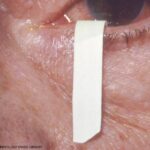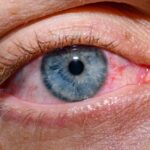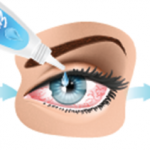Inflammatory Arthritis
When SjD patients present with inflammatory arthritis, Dr. DiRenzo uses a combination of leflunomide and hydroxychloroquine, citing supportive data from a 2020 Lancet Rheumatology article.5 Methotrexate is also an option for those with significant joint involvement.
Biologics are reserved for refractory cases of inflammatory arthritis. “If there are prominent glandular symptoms in addition to inflammatory arthritis and they haven’t responded to disease modifying anti-rheumatic drugs (DMARDs), anti-CD20 therapy like rituximab is a good choice,” explains Dr. DiRenzo.
“Tumor necrosis factor inhibitors can be a good option for synovitis when glandular symptoms don’t predominate,” adds Dr. Johr.
Dry Eye
When it comes to dry eye, both Drs. Johr and DiRenzo first stress the importance of co-managing with ophthalmology and obtaining an ocular staining sore (OSS) to understand how severe the dryness is.
“If possible, have the patient see a dry eye expert with a specific interest and expertise in dryness,” Dr. Johr notes.
Most of us know enough to recommend eye drops, such as preservative-free, single-use artificial tears, or prescription drops, such as cyclosporine or lifitegrast ophthalmic solutions. But what can we do as rheumatologists when those aren’t enough?
“A lot of patients don’t use thicker artificial tears (eye lubricants) at night, so that’s an easy place to start. Omega-3 fatty acid supplements are controversial since data for them is mixed, but our cornea specialists here at Penn find them helpful,” says Dr. Johr. “Intranasal varenicline has recently been approved by the FDA for dry eye, but a lot of people don’t know about it. There are no contraindications, but it’s expensive and and causes a lot of sneezing when first used.”
“A short course of steroid drops can accelerate healing in severe cases of dry eye, too,” says Dr. DiRenzo.
As for differential diagnosis, Dr. DiRenzo noted, “There’s an outstanding New England Journal of Medicine review on dry eye, and SjD only makes up a small portion of the causes.6 A more common cause is meibomian gland dysfunction, which is allergy driven. When allergies flare up, they clog the meibomian glands that make oil by the lash line. This oil is needed to make good tears—without it, tears evaporate too quickly, leading to dry eye. This is the cause of dry eye for many people, and there’s a specific treatment for this. Ophthalmologists can use perfluorohexyloctane ophthalmic solution [i.e., Miebo], allergy medications and warm compresses.”




